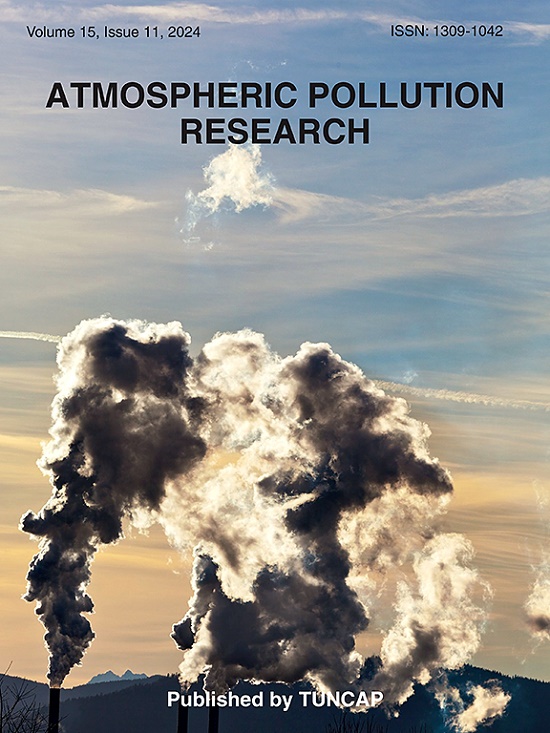基于国ⅵ测量方法的汽车蒸发排放特性及净化策略研究
IF 3.5
3区 环境科学与生态学
Q2 ENVIRONMENTAL SCIENCES
引用次数: 0
摘要
本研究基于国六测量方法进行了多项实验,分析了车辆蒸发排放特性及净化策略。结果表明:常压燃料系统日呼吸排放量为157.2 mg,其中碳罐排放占88.5%,主要排放种类为烷烃;密闭燃料系统日呼吸排放总量为82.2 mg,占渗透排放总量的97.1%,主要排放种类为芳烃和烷烃。汽车加油排放与碳罐吸附量呈显著负相关,与吹扫量无显著相关。碳罐换料工作能力(ORVR BWC)仅为常规工作能力(BWC)的53% ~ 72%。轮胎、内饰件和外饰件是汽车的主要背景排放源,分别占29%和25.1%。烘烤预处理是减少本底排放的有效途径。与汽油车相比,配备常压燃料系统的混合动力汽车(hev)通过提高排气速率来弥补排气时间的不足。配备密封燃油系统的车辆可以摆脱对净化策略的依赖。车辆配备密封燃油系统是一种技术趋势,未来的蒸发排放控制应侧重于渗透排放、加油排放和本底排放。本文章由计算机程序翻译,如有差异,请以英文原文为准。

Study on vehicle evaporative emission characteristics and purge strategy based on China VI measurement methods
In this study, several experiments were conducted based on China VI measurement methods to analyze the vehicle evaporative emission characteristics and purge strategy. The results showed that the diurnal breathing emissions from the atmospheric fuel system were 157.2 mg, with 88.5 % of the carbon canister bleeding emissions, and the main species emitted were alkanes. The diurnal breathing emissions from the sealed fuel system were 82.2 mg, with 97.1 % of the permeation emissions, and the main species emitted were aromatic and alkane hydrocarbons. There is a significant negative correlation between the vehicle refueling emission and the adsorption capacity of the carbon canister, but no significant correlation with the purge volume. The carbon canister refueling working capacity (ORVR BWC) is only 53 %–72 % of the regular working capacity (BWC). Tires, interior and exterior trims are the main background emission sources of the vehicle, accounting for 29 % and 25.1 % respectively. Baking pretreatment is an effective way to reduce background emissions. Compared to gasoline vehicles, hybrid electric vehicles (HEVs) equipped with atmospheric fuel systems compensate for the lack of purge time by increasing the purge rate. Vehicles equipped with sealed fuel systems can be freed from reliance on the purge strategy. It is a technological trend for vehicles to be equipped with sealed fuel systems, and future evaporative emission control should focus on permeation emissions, refueling emissions and background emissions.
求助全文
通过发布文献求助,成功后即可免费获取论文全文。
去求助
来源期刊

Atmospheric Pollution Research
ENVIRONMENTAL SCIENCES-
CiteScore
8.30
自引率
6.70%
发文量
256
审稿时长
36 days
期刊介绍:
Atmospheric Pollution Research (APR) is an international journal designed for the publication of articles on air pollution. Papers should present novel experimental results, theory and modeling of air pollution on local, regional, or global scales. Areas covered are research on inorganic, organic, and persistent organic air pollutants, air quality monitoring, air quality management, atmospheric dispersion and transport, air-surface (soil, water, and vegetation) exchange of pollutants, dry and wet deposition, indoor air quality, exposure assessment, health effects, satellite measurements, natural emissions, atmospheric chemistry, greenhouse gases, and effects on climate change.
 求助内容:
求助内容: 应助结果提醒方式:
应助结果提醒方式:


